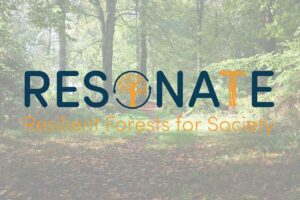 Hester Robertson, Founder of CloudForest, explains how impact investing can impact forestry. Hester previously worked for BG Group as a Mergers and Acquisitions Analyst.
Hester Robertson, Founder of CloudForest, explains how impact investing can impact forestry. Hester previously worked for BG Group as a Mergers and Acquisitions Analyst.
CloudForest is on a mission to create resilient, productive forests that people can enjoy. By crowdfunding forestry projects, the company will open the door to small-scale investors who want to see more sustainable forestry.
We believe that connecting people to forests can bring new value to the industry. Our focus will be on continuous cover forestry, using risk-based decision analysis tools, to generate resilient financial returns. We are enthusiastic about the opportunities for forestry to significantly contribute to the emerging low carbon bioeconomy.
Much is being written about the changing nature of wealth; that it encompasses connections, experiences, and legacy, not just money. This is a reflection that economists and the financial industry are catching up with what each of us already knew: financial metrics and models are simplistic representations and do not capture all that is important. With increased access to information and a growing number of online platforms, technology is making it easier for us to invest in line with our values. We are seeing a corresponding growth in Impact Investing: investing with the intention of having a positive environmental or social return as well as a financial one. Whilst this is still an emerging sector – with some debate as to exactly what actually counts as an Impact Investment – there is growing evidence that these investments usually meet, and often exceed the performance of comparable traditional investments.1 The explanation, at an organisation level, is thought to be through increased operating efficiencies and softer aspects such as improved employee engagement. There is also a growing recognition of the benefits that impact investing can bring through system level thinking: managing the risks and opportunities arising from environmental, societal and financial systems. For example, the circular economy aims to reduce reliance on raw materials by moving from extractive business models to ones which predominately reuse and recycle. Barriers to change, such as cultural norms and competing incentives, mean that system-level changes are more challenging than, say, increasing efficiencies through technology adoption.
Forest – a sustainable investment?
 Forestry as a sector is a natural fit for those looking for positive impact, and one where its reciprocal reliance on the environment and society is clearly apparent. Whilst acknowledging that top-down aspects such as tax treatment and government regulation heavily influence the form of commercial forestry, what potential is there for partnerships and innovations to achieve system level opportunities and create shared value?
Forestry as a sector is a natural fit for those looking for positive impact, and one where its reciprocal reliance on the environment and society is clearly apparent. Whilst acknowledging that top-down aspects such as tax treatment and government regulation heavily influence the form of commercial forestry, what potential is there for partnerships and innovations to achieve system level opportunities and create shared value?
James Reilly’s previous ICF blog “Is Clear-Felling Past its Sell-by Date?” notes that there is a social dislocation between foresters and the forests where, unlike farming, “foresters are employees not owners”. In fact, they are often twice removed: working for forest management companies who themselves are not owners of the forests. Of course, tangible ownership runs much deeper than the legal right of possession and I would add that in the case of forestry investment vehicles this social dislocation can extend to some forest owners as well. If forestry as a “pure investment” is missing the intrinsic value of tangible ownership, what is the consequence? Connections, whether that be to objects, people, or places open up a two-way relationship: we care for the things we own. Viewed in this way the “Endowment Effect” is not an irrational behaviour for economists to puzzle over, but rather an opportunity to create value. Through crowdfunding, CloudForest will work to support and explore this dynamic: can both the health of the forest and the crowd benefit; what new ideas will this diverse group bring?
Diverse ownership for diverse forests
The relationship we have with something also changes our priorities and our risk appetite. Forests are exposed to a wide range of biological risks, and, for commercial forestry, market and country-related risks as well. The duration over which these are relevant, and the uncertainty that this brings makes risk modelling particularly important. Not only is this relevant for the individual forest, but there are also wider implications for industry and society, particularly where systemic risks exist. After all, sustainable management of the UK’s forests is dependent on the sector as a whole being economically viable. CloudForest’s market research has provided clear data on the priorities of small-scale investors: they want to see diverse, ecologically-rich forests. Diverse forests reduce biological risks, and with a growing body of research into the complex interactions that occur in forests, we are increasingly equipped to factor this into decision making. By building risk-adjusted financial models, CloudForest can work towards realising both investors’ financial objectives and their environmental ambitions. However, as discussed earlier, these models must not be the sole basis for a forest strategy. Only through partnerships, and landscape-scale thinking can we realise the full potential of forestry.
For further thought on systems thinking from a farming perspective I encourage you to read this excellent RSA blog post.
- Sustainable Reality: Understanding the Performance of Sustainable Investment Strategies, Morgan Stanley Institute for Sustainable Investing. March 2015
Disclaimer: The views and opinions expressed in this article are those of the author and do not necessarily reflect the views of the Institute of Chartered Foresters.






